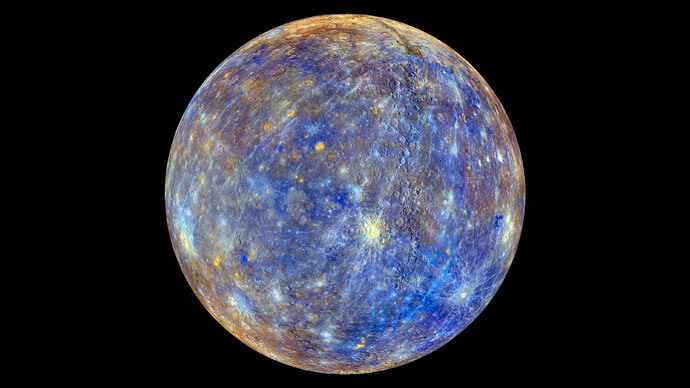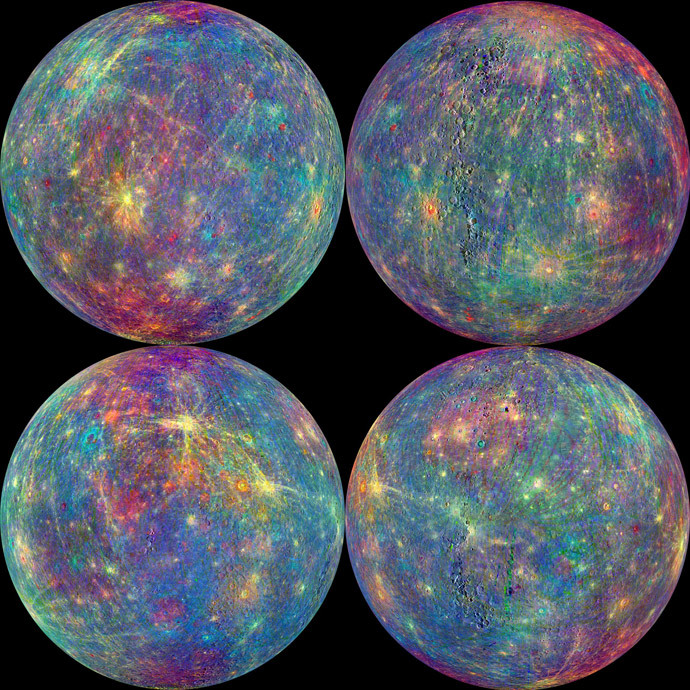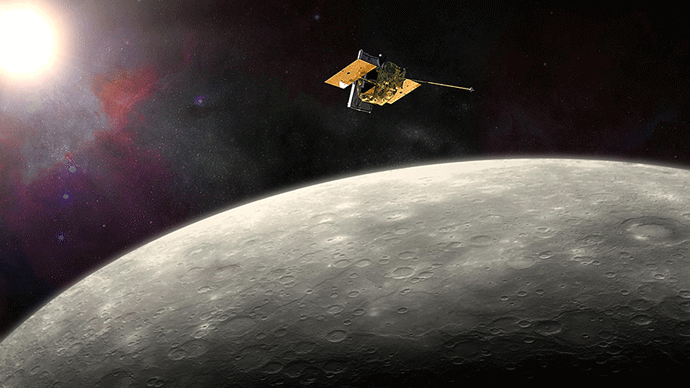Astonishing images of Mercury captured by NASA spacecraft before smashing into planet

As Judgment Day approaches for NASA’s Messenger probe, stunning new pictures have emerged of the planet it is set to crash into on Thursday: Mercury.
The incredible close-up shots show our solar system’s smallest planet as never before.
The psychedelic appearance is explained by NASA overlaying the pictures from the spacecraft’s Visual and Infrared Spectrometer (Virs) onto a black and white mosaic in order to accentuate features such as craters and volcanic vents.

After more than a decade since its launch, and four years circling Mercury, Messenger will go where no other probe has gone before on April 30th. After running out of fuel for its thrusters, the 500kg spacecraft is set to plunge onto the planet’s surface at some 8,750 miles per hour, creating its own sizeable crater and destroying the probe itself.
But the touchdown looks set to be an anti-climactic one.
Messenger will crash behind Mercury, out of view of Earth. In fact it will take hours for NASA to confirm the probe’s demise, only being able to do so hours later when the spacecraft fails to appear from behind the planet.

Scientists have hailed the probe’s mission as a success, stating Messenger has answered lots of questions about the planet’s make-up. Some of the biggest discoveries include:
1. Water
Finding frozen water so close to the Sun was a major surprise, though there had been hints in earlier radar observations.
2. What lies above
Something was covering the ice, an unexplained dark layer. More investigation will be carried out but NASA is putting its money on it being carbon-rich compounds, similar to substances found in certain meteorites and in comets.
3. It used to be bigger
To be exact, over the past four and a half billion years Mercury has shrunk by over 7 kilometres in radius.
Reams of data have yet to be analyzed. But for now, it’s a bittersweet time for those whose careers have revolved around the probe.
'I have worked on the mission for 19 years. It's like losing a member of the family. Even pre-knowledge doesn't prepare you completely for the loss,' said Mercury mission head Sean Solomon.












